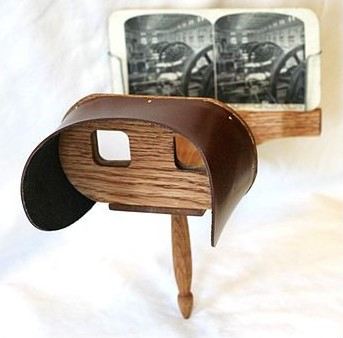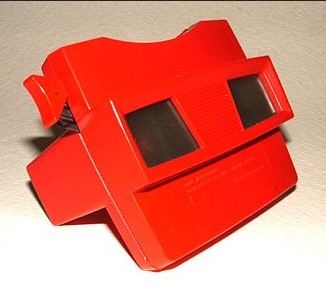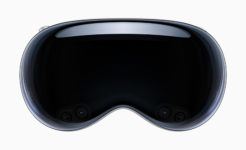
What’s Wrong with VR Glasses and Why I’ll Never Buy the Ones
The whole world is buzzing about VR glasses or headsets; which seem to have arrived to us right from the future. Sony, HTC, Oculus Rift and Google Goggles are taking off like rockets. Immersing into a virtual reality is the dream of any gamer and looks like it will be coming true! I hate to be the bearer of bad news, but actually, it is not. In fact, we’ve already had them around for almost a century and a half.
Surprised? Just spend ten minutes to read this article and I’ll prove my point.
NO MAGIC, JUST A SLEIGHT OF HANDS
First, let’s learn how the VR glasses work. I won’t get too technical, all you need to do is to open a web-page and look up any VR headset’s specification. What the first line says is; the number, the matrix and the resolution of the screens. Two LED displays with a combined resolution of 2160 x 1200 for Oculus Rift and two 1080p AMOLED displays with a combined resolution of 2160 x 1200 for HTC Vive.
(Those two are the most popular models on the market right now, so I stuck to their specifications in my article.) These screens are housed in a half-mask, half-glasses housing together with other thingumajigs: like cams, gears, IR sensors to connect to the gaming console or to warn you about the walls nearby.
Strictly speaking, those cams and IR sensors are the only modern inventions involved in these super popular gadgets. The truth is, that all the VR glasses are based on the stereoscopic principle. What does that mean?
The phenomenon of the stereoscopic vision was discovered in the second half of the 19th century, and they learned to replicate it with the special lenses around the same time. The two identical copies of the same image, when seen through a pair of such lenses, are slightly shifted horizontally and overlap just enough to create the illusion of volume and perspective. Yes, it’s just an optical illusion which is determined by the binocular nature of our vision.

Meet the great-grandfather of VR glasses – Holmes-type stereoscope, 1861. Source: Holmes Stereoscope
Looks a bit like Google Goggles, doesn’t it? It has shields to cut off the outer light and a prop for the picture. Back then you had to but not only the stereoscope but also a set of specially developed images. In 1939 the Holmes contraption reincarnated as View-Master and survived as long as the end of 1980s.

I bet kids of 1970s remember this gadget. Source of the image: View-Master_Model_G
You had to slide in the carton ring with small slides in it and watch them, clicking the toggle to change the picture. There were comics, but usually just a set of landmarks and landscapes. For a better view you had to point your View-Master at a source of light: a window or a desk lamp. Modern VR glasses save you from searching an outer light, because they feature backlit LED screens.
In other words, it’s the same View-Master on steroids plus a casing of modern materials and a contraption to keep that gadget on your head.
We See the Light
Disappointed? I bet so. It’s a common fact that VR is just an illusion of reality, but here we have an illusion of the illusion. And what’s more – a very hazardous one. The depth of the VR glasses from front to foam, top center (forehead) varies from 3 to 4 ½ inches. In other words, the distance between your eyes and the screen isn’t too far apart. I had to Google this info, because I couldn’t find it in official specification on websites. Why do I care about this distance? Because this is critical to understanding the harm that the VR glasses can do to a human eye.
Though little, almost minuscule, the VR glasses screens which replaced the lenses of the past time still remain screens. If you spend another two minutes of your time and search the safe distance from the monitor, you’ll come out with the figure of 16 inches minimal. When looking at closer objects, our eyes are stressed the most. That’s why doctors recommend following the rule of 20 minutes. Every 20 minutes of work with the computer, it is recommended to take a break and look at a distant object.
Some advocate the VR glasses by saying that the eye relaxes watching the distant gaming objects in VR. But, it’s a catch. There are NO distant objects in VR. There CAN’T be any distant objects in VR, it’s an illusion. Remember the slides for the View-Master? They’re flat in reality. While we’re imagining that we see distant castles or battle fields, in reality our eyes are exposed to two sources of light at a dangerous proximity. To check out how it feels, experiment with your smartphone that has the same screen. Put it 4 inches away from your eyes and play for ten or more minutes.
The smallest problem you’ll get, will be dry eyes. It can be uncomfortable to say the least. More serious complications can include accommodation cramp and developing of myopia or short sight. The worst is the decline of your sight, especially if you already have some sight condition. Clench your fist as tight as you can and hold it for five minutes at least. I’m sure you’ll fail. You’ll feel cramps and your hand will tremble. And you’ll feel some muscle pain afterwards. That’s how our eye feels when looking at a close object. The problem is, the eyes don’t always hurt, and we remain ignorant about the harm.
The manufacturers ensured themselves from the civil suits in the future, by setting the age limits. Kids under 12 should not use the VR glasses. The eye muscles of the younger kids are known to be too weak to stand the exposure to the screens. Yet, even adults are not immune to developing a sight condition.
With the VR glasses, the problem is aggravated by the fact that every outer source of light is cut off, in order to create the illusion of full immersion into the game world. So, it’s like fiddling with the smartphone in a completely dark room. While the safety regulations for comfortable work with the computer again demands a source of light – other than the backlit screen.
To make a long story short, the VR glasses, goggles or headsets do hell to your eyes. It’s not a secret. You can double check all the info, it can be found on numerous web-sites dedicated to the ergonomics, health and physics. But, not on the gaming web-sites of course.
You can say, “Okay, I’ll stick to 20 minutes of gaming and then make myself take a break.” I don’t doubt your good intentions, but in all sincerity, I can’t see you doing it. Not with the modern exciting games we have. And the developers are sure to introduce other breath-taking VR-based features.
As for me, I’m 100% sure, I’ll never buy any VR gadget. I’m already short sighted and I value my eyes very much. But, you may have your own ideas. If you do decide to purchase a pair of VR glasses, I strongly recommend consulting your ophthalmologist first. The world around us is too beautiful to swap it for the artificially crafted non-real, reality of pixels.






Facebook
Twitter
RSS